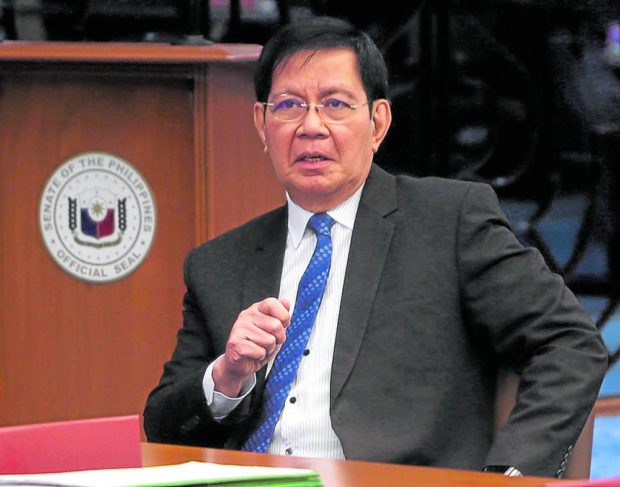Lacson says no laws broken for turning fugitive in 2010

MANILA, Philippines — Presidential aspirant and Senator Panfilo Lacson says no law was broken when he went into hiding in 2010 in relation to the case involving the murders of publicist Salvador “Bubby” Dacer and his driver Emmanuel Corbito in November 2000.
In 2011, the Supreme Court junked with finality the case against Lacson on the Dacer-Corbito murder case.
In the Panata sa Bayan presidential forum hosted by the Kapisanan ng mga Brodkaster ng Pilipinas (KBP) on Friday, Lacson was asked whether his actions — going into hiding despite an arrest order being issued in 2010 — would not set a dangerous precedent to other people who may come in conflict with the law.
Lacson stressed that a Supreme Court (SC) decision in 2006 which allowed individuals with outstanding warrants of arrest to continue with their legal proceedings gave him an option to elude arrest.
“Ako, wala akong viniolate kasi meron ngang jurisprudence po ‘yon, eh tama ‘yong sinasabi doon na primary sa rights ng individual na ‘yong i-exercise niya dahil sinasabi sa jurisprudence, maski hindi ka magpasailalim sa physical custody ay pwede pa rin umandar ‘yong kaso,” the Senator told the forum’s panel.
“‘Yon po ang aking (ginawa), malinaw po sa jurisprudence nandyan, kung babasahin natin nang masisinsinan, nang maayos ‘yong batas, malalaman niyo wala akong viniolate,” he added.
READ: Lacson keeps out of sight
When questioned further, Lacson stressed that decisions of the SC become the law of the land, and in this case, he believes he was given an option to evade authorities and let the legal proceedings continue despite him not being in the physical custody of the court.
“It is the choice, it is an option that I took no, kasi under the — alam niyo ‘pag Supreme Court ruling, it becomes part of the law of the land. Kaya wala akong viniolate. So kung ang option ko ay hindi magpakulong, pero paandarin ‘yong kaso, mag-file ng pleadings,” Lacson explained.
“Ibang usapan kung ang requirement before bago lumabas ‘yong Tuliao case, ay kailangan mapaisailalim ka. Catch-22 ‘yon, kasi ma-archive lang ‘yong warrant of arrest at ‘yong kaso ay hindi aandar. So I exercised that option, wala po akong viniolate na batas, malinaw po ‘yon,” he added.
The jurisprudence that Lacson was referring to was the March 31, 2006 SC decision on the Miranda versus Virgilio M. Tuliao, which was about the murder of two individuals, including Tuliao’s son.
The SC established in the case that people still not under the jurisdiction of the court can file pleadings or “invoke the processes of the court even though there is neither jurisdiction over the person nor custody of the law”.
Lacson went into hiding in January 2010, shortly before a warrant of arrest was issued by a court for his alleged role in the murder of Dacer and Corbito.
Dacer and Corbito were abducted on November 24, 2000, at an intersection in Makati City. Their burnt remains were then discovered at a creek in Cavite, and were confirmed by forensic experts through dental records and personal items.
READ: What Went Before: Suspects in Dacer, Corbito murders
Lacson, a former Philippine National Police (PNP) chief, was implicated in the case as his subordinates at the Presidential Anti-Organized Crime Task Force (PAOCTF) Michael Ray Aquino and Cesar Mancao were alleged to be responsible for the killings.
Lacson has repeatedly denied any involvement in the incident. Until now, the case remains unsolved.
READ: What Went Before: Dacer-Corbito murders
READ: Mancao to finally tell truth on Dacer, Corbito murders